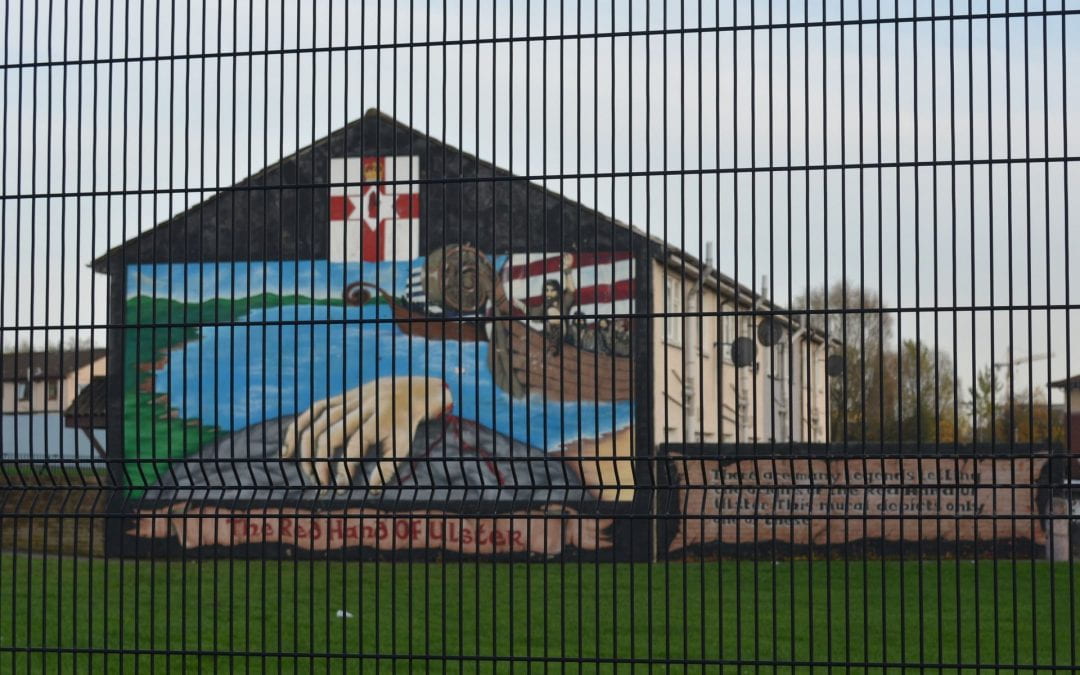By Peter Geoghegan
This is not a return to the Troubles. But peace cannot truly be achieved until lives improve, says Peter Geoghegan.
The first job I had that was not paid by the hour was at a sectarian interface in Derry. It was 2008 – a decade after the Good Friday Agreement had ostensibly brought peace to Northern Ireland – and I was charged with encouraging Catholic and Protestant communities on either side of a ten-foot high corrugated barrier to “re-imagine their built environment”.
Such irenic notions soon crumbled in the face of reality. The good people – and they were good people – living along the interface didn’t want public talks and warm words from do-gooders. They wanted education, employment, and a sense of purpose. After six months, the project ended, and I left Derry. The people stayed.
I thought of that interface last week as I watched footage of a car alight in Derry. Similar riots took place across Loyalist areas of Northern Ireland. Even the death of Prince Philip did not completely quell the violence: on Friday night, missiles were fired at police in Belfast, during the eighth consecutive night of rioting.
So, what provoked such a show of rage from within loyalism? The answer being pushed by some – particularly the Democratic Unionist Party – is that all this anger has been unleashed by the decision not to prosecute prominent members of Sinn Féin, including deputy first minister Michelle O’Neill, for attending the funeral of leading republican Bobby Storey last year, seemingly in breach of COVID rules.
But the absence of a few £200 fines does not fully explain the burning buses and petrol bombs. Other factors are at play. Some are local. The unrest largely began in satellite towns of Belfast where the renegade south-east Antrim cadre of the Loyalist Ulster Defence Association has a significant presence.
What seemingly began as criminally motivated ‘recreational rioting’ took on a far more political colour as the unrest spread. The violence seems to have been orchestrated online, often without any clear leadership. Anonymous posts on social media called on “patriot Loyalists” to “stand up and be counted”.
The history of loyalism is littered with foes that Ulster must be protected from: Catholicism, the Irish Republic, even, at times, a duplicitous Westminster. The latest ‘Lundy’ is a technocratic fix: the Northern Ireland protocol designed to prevent a hard border on the island after Britain left the European Union.
The protocol means the EU border has effectively been erected in the Irish Sea. Heavy-handedness from Brussels in policing this new border has added to an innate sense of Loyalist grievance – not least as many Unionists voted for Brexit.
Many Brexiters – including the DUP and some within the UK government – have attempted to divorce the protocol from Brexit. If all checks and paperwork were scrapped calm would return to Northern Irish streets. But this is sophistry.
The protocol is a direct product of Boris Johnson’s ‘sovereignty-first’ Brexit. Once the prime minister decided that Britain must be completely free from the EU’s ‘shackles’, some form of regulatory barrier became inevitable. Whether this was enforced on the island of Ireland or in the Irish Sea, tensions in Northern Ireland were inevitable.
The DUP’s support for Brexit might have partly been predicated on a longing for Unionist hegemony but this was always wishful thinking. Northern Ireland has changed. The state’s future will likely be decided by the growing numbers of middle-class Protestants increasingly attracted by the avowedly non-sectarian politics practised by Alliance and the Greens.
Far from copper-fastening Northern Ireland’s place in the union, Brexit was always going to have the opposite effect. But all the talk of an ‘economic united Ireland’ and ‘border polls’ has further unsettled a deeply divided society.
Once again, Westminster appears uninterested. The secretary of state for Northern Ireland, Brandon Lewis, waited until Thursday – almost a week into the unrest – before “flying to Belfast”.
The current spasm of violence should not be overplayed. This is not a return to the Troubles. Previous outbreaks of Loyalist unrest in 2005 and 2010 burned brightly then faded away, albeit often deepening the alienation in working-class Protestant communities.
The DUP has much to answer for. Having made a border of any kind ‘a blood red line’, Arlene Foster’s party played into Loyalist fears. Now the first minister is left pleading for restraint with no political strategy for how to pull Northern Ireland out of the mire that her party did so much to propel it into.
Loyalists have much to be angry about. Poor Protestant boys have the lowest levels of educational attainment in Northern Ireland. There is little sign of a ‘peace dividend’.
Once the violence dies down, and the media attention shifts, the good people that I met at the interface in Derry all those years ago will still be there. Until their lives improve, peace in Northern Ireland will always be the same: fragile, partial and easily manipulated by cynical political forces.
This article was originally published on openDemocracy.net and was republished under a Creative Commons Licence. If you enjoyed this article, visit openDemocracy.net for more.
Peter Geoghegan is the author of Democracy for Sale.
Disclaimer: The ideas expressed in this article reflect the author’s views and not necessarily the views of The Big Q.
You might also like:

